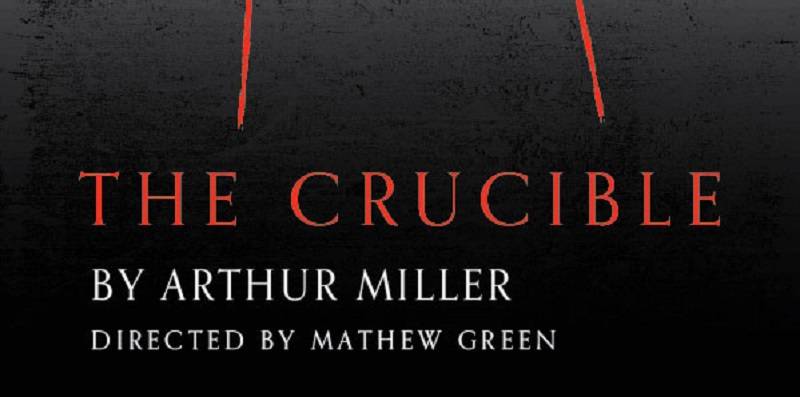It seems difficult to get through school without running into an Arthur Miller play, and of those, The Crucible may be one of the most studied. It’s the first suggested search when one types “Arthur Miller” into Google, it’s often referenced with no explanation whenever someone says the word “Salem” or “Witch hunt”, and it is the most-often staged of Miller’s works.
This imagined depiction of the Salem Witch Trials starts with documented facts, using the real names of the people involved in the trials of 1692, and looking more deeply into their personal lives. The young girls attempting to escape “trouble”, the stoic farmer protecting his family from his decisions, the passionate expert hoping to eradicate evil, and the unfortunate scapegoat are all people we can relate to, even today. Unfortunately?
I had a chance to email Mathew Green regarding the play, this production, and its place in history and relevance today.
Smile Politely: I know you’re an Arthur Miller superfan, so … in your opinion, is Crucible his best work?
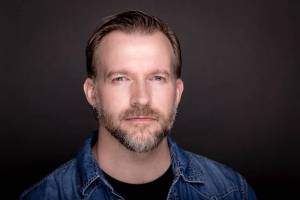 Mathew Green: “Superfan” might be overstating* it, since I haven’t made it through all of his works, but I’m definitely a fan. I think Miller belongs on the American playwright Mount Rushmore next to August Wilson, Tennessee Williams, and Edward Albee. As for The Crucible, I don’t just think it’s Miller’s best work – I think it’s probably the best American play ever written. Perfectly willing to argue about that, if anybody’s interested. It’s my favorite play, if I’m being honest. It’s extraordinarily well constructed, and the stakes are incredibly high.
Mathew Green: “Superfan” might be overstating* it, since I haven’t made it through all of his works, but I’m definitely a fan. I think Miller belongs on the American playwright Mount Rushmore next to August Wilson, Tennessee Williams, and Edward Albee. As for The Crucible, I don’t just think it’s Miller’s best work – I think it’s probably the best American play ever written. Perfectly willing to argue about that, if anybody’s interested. It’s my favorite play, if I’m being honest. It’s extraordinarily well constructed, and the stakes are incredibly high.
*[Editor’s note — that’s only because Green is so busy: at work, I’ve crossed his path multiple times while he was staring longingly at the recent centennial compilation of every Miller play. There may have been wistful sighs.]
SP: What about it specifically appeals to you and your directorial style?
Green: Story is everything. So the challenge, then, is to present that story—in this case, one that most people have heard of—in a way that will be compelling and, hopefully, original. My particular style is to keep things simple and focus on the performance—to keep the emphasis on the words and the emotions. Is complex simplicity a thing? I suppose that’s my style.
SP: It’s being staged in the black box theatre and I’ve seen some of the rehearsal photos — are there any particular set design features that are unique about this production, and what went into these creative decisions?
Green: Our designer, Molly Ilten Fullan, has created a little wonder with our set. The show is being staged alley-style, which means that the audience is on two sides of the stage. That was my only real contribution, other than my desire to keep it simple. My hope was to create two sides, opposing sides. From there, Molly came up with the concept of constructing a sort of spider web of ropes on either end of the playing space. I sometimes think of them as a thicket. Either way, there’s the image of being caught up, being trapped. And, of course, when we speak of witch trials, ropes are pretty evocative. Talk about complex simplicity. This set is a definition of that.
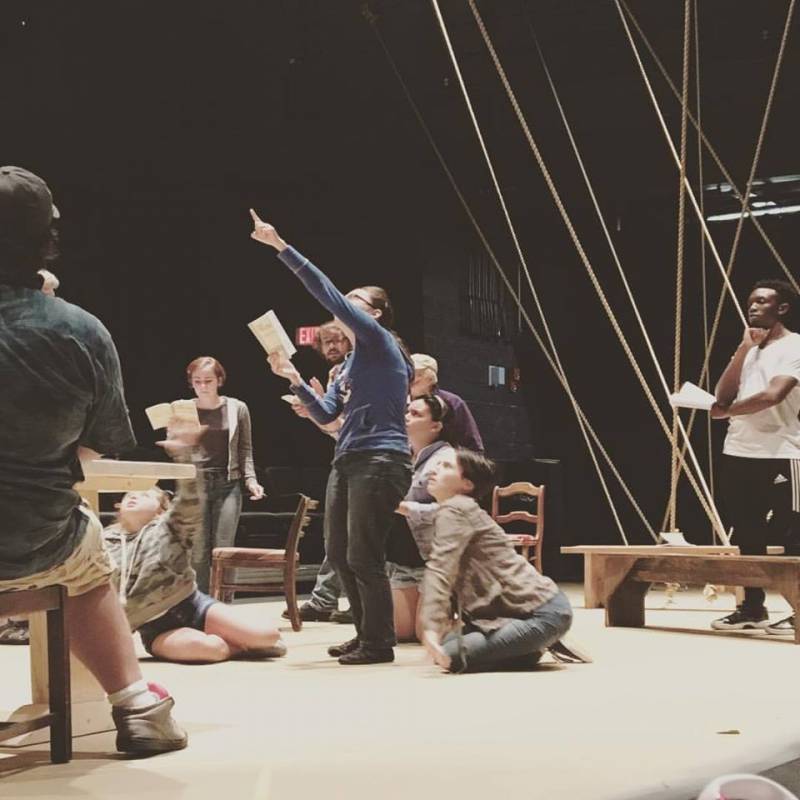
SP: I love that the audition notice explained that the play is meant to reflect a community, and I see your casting choices reflect the diversity of C-U as it exists right now. But what about those choices as they apply to the historic setting of New England during the end of the 18th century?
Green: Honestly, I wasn’t the least bit concerned with the historic setting. I have the utmost respect for Miller’s work and his words, and I think the best way to honor what he was trying to accomplish is to make the play as immediate as possible. I think most people know that the play, when written, was a reaction to McCarthyism and the HUAC hearings. So it was always a metaphor for the ugliness and persecution that come from fear and self-interest.
I’m really pleased to have a diverse cast, because it is important that the arts reflect the community. But it also means a lot to me that this cast reflects the actors who auditioned. The opportunity must exist in the first place. When the opportunity is there, as in this case, you’re going to have people show up and blow you away. We need more of that. Diverse casting is important, but diverse stories need to be told as well.
The publicity for the show has called it a “modern” take on the play, but it’s really only modern insofar as the characters will be wearing contemporary clothing. All of the original Puritan phrasing has been retained. The hope, there, is to bridge the distance between the original witch trials and present day. It’s a way of asking, “Have things changed all that much?”
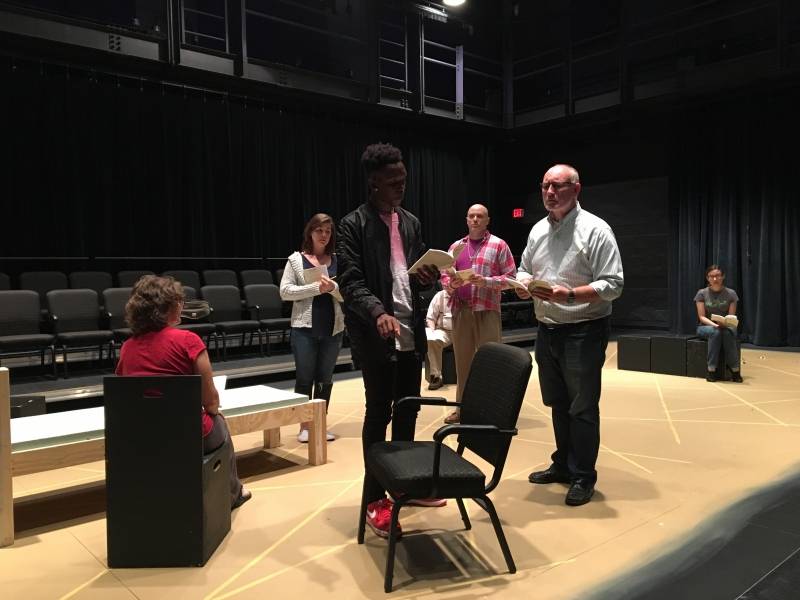
SP: It’s not hard to draw parallels between this work and current events, in fact the phrase “witch hunt” has been used recently and often. Do you feel this may have an impact on your production? What do you think are the advantages or drawbacks of presenting this story to an audience at this moment in history?
Green: In rehearsal, there has been very little mention of politics; that said, yes, it’s hard to ignore the parallels to the current political landscape. What we’ve talked about in rehearsal, instead of political entrenchment, is human nature. There are sides to this play, to be sure, but all of these characters are flawed. Few of them are ideologically pure, so to speak, and the ones who are suffer for it. There’s a lesson there somewhere, I think. The “hero” of the play is a deeply flawed individual whose fear of having those flaws exposed keeps him from speaking up when he sees injustice. And the accusers and judges and bystanders all have their own agendas, most of which deviate from their stated purpose.
I wish the metaphor seemed strained. I wish this play was a quaint, dusty relic of another time. But Faulkner said it best: “The past is never dead. It’s not even past.” So much work to do.
SP: Following you & Parkland Theatre on facebook means I’ve been seeing your posts where you say, “We really have something” in regards to the cast and production. Can you expand on that? It sounds very positive, but I’d love to hear details.
Green: Every night I come away from rehearsal deeply impressed with what I’m seeing. It’s a great play to begin with, but it has to be performed well to really move you. And of course I cast the actors because I felt they’d be good in their roles, but they’re exceeding my expectations. I’m seeing actors stretch and explore every night, sometimes outside of their comfort zones, and the results are tremendous. This is a 21-person cast, and there’s no room on that little stage for anyone to phone it in. Everyone—from the “main” roles to the actors with only a few lines—is going deep.
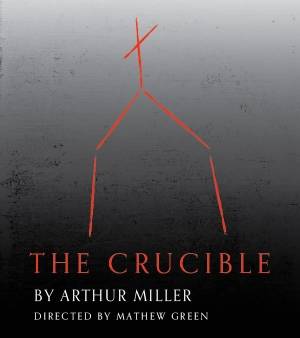 Parkland Theatre’s The Crucible, written by Arthur Miller and directed by Mathew Green, will be performed in the Second Stage Theatre from Thursday, September 28th through October 8th, at 7:30 p.m. or Sunday matinees at 3 p.m. Visit Parkland Theatre’s website for the full schedule details and to make a reservation, or call the ticket office during business hours at 217-351-2528. The opening night performance is already sold out, so I’d suggest doing so sooner rather than later.
Parkland Theatre’s The Crucible, written by Arthur Miller and directed by Mathew Green, will be performed in the Second Stage Theatre from Thursday, September 28th through October 8th, at 7:30 p.m. or Sunday matinees at 3 p.m. Visit Parkland Theatre’s website for the full schedule details and to make a reservation, or call the ticket office during business hours at 217-351-2528. The opening night performance is already sold out, so I’d suggest doing so sooner rather than later. 







